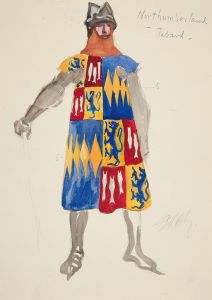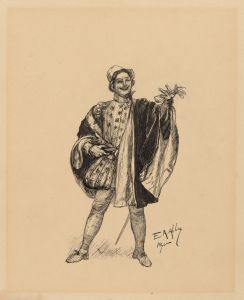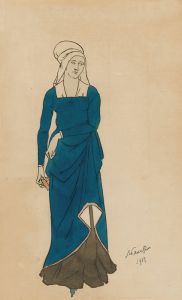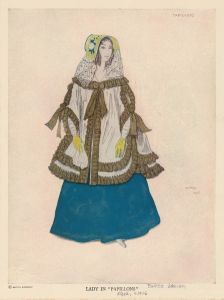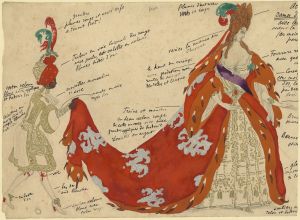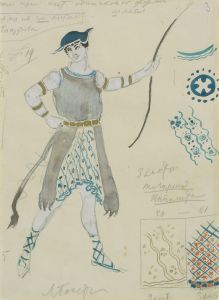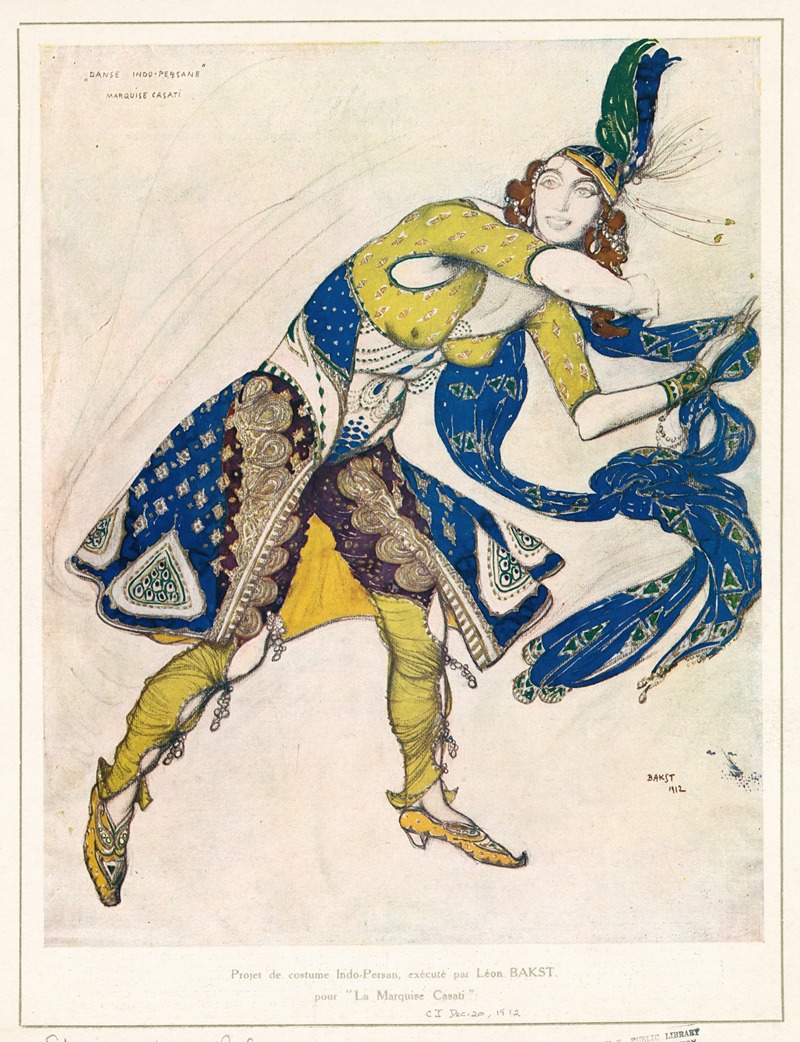
Projet de costume Indo-Persan, exécuté par Léon Bakst pour ‘La Marquise Casati’
A hand-painted replica of Léon Bakst’s masterpiece Projet de costume Indo-Persan, exécuté par Léon Bakst pour ‘La Marquise Casati’, meticulously crafted by professional artists to capture the true essence of the original. Each piece is created with museum-quality canvas and rare mineral pigments, carefully painted by experienced artists with delicate brushstrokes and rich, layered colors to perfectly recreate the texture of the original artwork. Unlike machine-printed reproductions, this hand-painted version brings the painting to life, infused with the artist’s emotions and skill in every stroke. Whether for personal collection or home decoration, it instantly elevates the artistic atmosphere of any space.
Léon Bakst, a prominent Russian painter and scene-and-costume designer, created the artwork "Projet de costume Indo-Persan, exécuté par Léon Bakst pour ‘La Marquise Casati’" in the early 20th century. Bakst, born as Lev Samoilovich Rosenberg in 1866, was a key figure in the Ballets Russes, a renowned ballet company that revolutionized the performing arts scene in Europe through its innovative and exotic productions.
The subject of this particular costume design, Marchesa Luisa Casati, was an Italian aristocrat, muse, and patroness of the arts, known for her eccentric personality and flamboyant style. Casati was a central figure in European high society and the avant-garde art world during the early 1900s. She was famous for her extravagant parties and her unique fashion sense, often commissioning artists to create striking and elaborate costumes for her.
The "Projet de costume Indo-Persan" reflects Bakst's fascination with Orientalism, a trend in Western art and design that drew inspiration from the cultures, aesthetics, and motifs of the Middle East and Asia. This fascination was prevalent in the early 20th century and influenced many artists and designers of the time. Bakst's work often incorporated rich colors, intricate patterns, and luxurious fabrics, all of which are evident in this costume design.
The costume designed for Casati is characterized by its opulent and exotic appearance, blending elements from Indian and Persian traditional attire. Bakst's design features elaborate embroidery, vibrant colors, and flowing fabrics, creating a sense of movement and drama. The use of luxurious materials and detailed ornamentation highlights Bakst's skill in creating visually stunning and culturally evocative costumes.
Bakst's collaboration with Casati was part of a broader trend of artists and designers working with wealthy patrons to create unique and personalized works of art. Casati's willingness to embrace avant-garde and unconventional styles made her an ideal muse for Bakst, whose designs often pushed the boundaries of traditional costume design.
The "Projet de costume Indo-Persan" is a testament to Bakst's ability to merge artistic creativity with cultural influences, resulting in a design that is both visually captivating and historically significant. This work not only showcases Bakst's talent as a designer but also reflects the broader cultural and artistic trends of the early 20th century, particularly the fascination with Orientalism and the role of the artist-patron relationship in the creation of innovative art.
Bakst's contributions to the world of costume design, particularly through his work with the Ballets Russes and figures like Marchesa Casati, have left a lasting impact on the arts. His ability to blend different cultural elements into his designs has influenced generations of artists and designers, making his work an enduring part of art history. The "Projet de costume Indo-Persan" remains a notable example of his artistic vision and his ability to create costumes that are both beautiful and culturally resonant.






